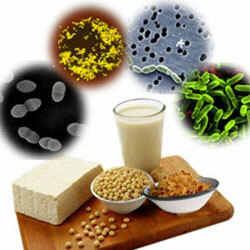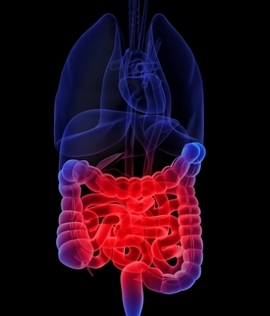In medical circles there are many disputes about the treatment and diagnosis of dysbiosis. Some scientists refer to bisbacteriosis as the source of almost all diseases and health problems. Scientists with a different opinion refer to it as an ordinary microbiological term, which does not have a particular practical significance.
This disease can disappear in case of correct nutrition correction and with proper treatment, or it can be transformed into a deeper and more serious form of the disease with serious consequences for the human body. In many cases, the intestinal dysbacteriosis can have various symptoms and, without giving the necessary treatment, can take a prolonged and actively progressing course. It can often be difficult to determine due to the variety of symptoms, so the analysis of intestinal dysbacteriosis is the most optimal variant of fixing the disease for its subsequent treatment.
The concept of intestinal dysbacteriosis includes excessive colonization of small intestine microbes, and, as a consequence, a change in the microbial composition in the large intestine. Proceeding from the fact that the violation of microbiocenosis occurs in patients who have pathologies of the intestine and other digestive organs, dysbacteriosis is a bacteriological concept. From this it follows that to consider dysbacteriosis can only be one of the manifestations or, as a certain complication of diseases, but in no case can dysbiosis be considered as a separate, independent nosological unit.
 The extreme degree of intestinal dysbacteriosis involves the presence of bacteria, the habitat that is the gastrointestinal tract, in the blood of a person. This disease is called bacteremia, but the presence of these bacteria in the blood can lead to the development of sepsis. The composition of the intestinal microflora is disturbed and accordingly there is a dysbacteriosis in various diseases of the intestine, stomach, and other organs of the digestive system of man, as well as in the treatment of certain diseases by antibiotics. Similarly, the use of immunosuppressants leads to the formation of this disease, as well as the negative impact of harmful factors that are present in the environment.
The extreme degree of intestinal dysbacteriosis involves the presence of bacteria, the habitat that is the gastrointestinal tract, in the blood of a person. This disease is called bacteremia, but the presence of these bacteria in the blood can lead to the development of sepsis. The composition of the intestinal microflora is disturbed and accordingly there is a dysbacteriosis in various diseases of the intestine, stomach, and other organs of the digestive system of man, as well as in the treatment of certain diseases by antibiotics. Similarly, the use of immunosuppressants leads to the formation of this disease, as well as the negative impact of harmful factors that are present in the environment.
To confirm the diagnosis, a test for dysbiosis is performed. An obligatory analysis to determine, diagnose and confirm the disease is the analysis of feces for dysbiosis. Any changes in the qualitative or quantitative characteristics of the intestinal microflora suggest the creation of ideal conditions for the development of conventionally pathogenic bacteria in the body, which belong to the genus Proteus, Staphylococcus, Energy Bacteria, Pseudomonas, Acinetobacter, etc.
Dysbacteriosis of the small intestine is also allocated. With this disease, the number of microbes increases, the number of others decreases in the mucosa of the small intestine. With the dysbacteriosis of the small intestine, the number of anaerobes, actinomycetes and other microorganisms decreases, which represent natural inhabitants of the human intestine 2 to 30 times. The reasons may be excessive intake, into the small intestine, microorganisms with achilias or in violation of certain functions performed by the ileocecal valve. The development of immunodeficiency, violation of intestinal permeability, impaired absorption and intestinal digestion also creates favorable conditions for the development of pathological microorganisms.
 Dysbacteriosis develops in the large intestine due to changes in microflora composition. Factors affecting the composition of microflora is an adverse effect that weakens the body's natural defense mechanisms. Such factors include extreme geographical and climatic conditions, abundant contamination of the biosphere with production waste and chemicals and compounds. Infectious diseases, malnutrition, digestive system diseases, ionizing radiation also have an impact.
Dysbacteriosis develops in the large intestine due to changes in microflora composition. Factors affecting the composition of microflora is an adverse effect that weakens the body's natural defense mechanisms. Such factors include extreme geographical and climatic conditions, abundant contamination of the biosphere with production waste and chemicals and compounds. Infectious diseases, malnutrition, digestive system diseases, ionizing radiation also have an impact.
In order to start treatment it is necessary to perform an analysis for dysbiosis. The price of treatment will depend on the direct from the degree of the disease. The main measures in the treatment of dysbacteriosis is the elimination of excess contamination of bacteria in the small intestine. Then you should restore the normal microbial flora of the colon. The next step is to improve absorption and intestinal digestion, restore impaired intestinal motility, as well as stimulate the reactivity of the body.
In order to suppress the excessive growth of microbial flora in the intestine and small intestine, special antibacterial drugs must be used. The most common antibiotics are penicillins, tetracyclines, quinolines, cephalosporins, and metrodazole. It should be said that in the case of the use of broad-spectrum antibiotics, eubiosis in the large intestine is disrupted. Antibiotics are administered orally, for seven to ten days at regular doses.
In the event that accompanying diseases have appeared in the disease of colon dysbiosis, it is necessary to take those medicines that will have minimal effect on the microbial symbiotic flora and will have a suppressive effect on the growth of staphylococci, proteus, yeast fungi and a number of other aggressive strains of bacteria and microbes. These medications include intetriks, nitroxoline, eresfuril, furazolidone and other drugs. In cases of severe form of staphylococcal dysbacteriosis, it is necessary to use antibiotics such as palyne, tarivid, metradinazole, neviramon. Antibacterial drugs are prescribed by the doctor within ten fourteen days. In this case, if fungi are found during analysis in the feces or intestinal juice, the doctor prescribes levorin or nistanin.
 There are many ways to prevent dysbacteriosis. Based on medical practice, the primary prevention of dysbacteriosis is a very difficult task. The solution to this problem provides for a comprehensive impact and resolution of other preventive problems. The difficulty lies in the fact that in order to prevent dysbiosis, it is necessary to improve the ecology, which seems impossible to the inhabitants of megacities, especially those in which the factories, production facilities and factories for the processing of metals, chemicals, etc. are located. Important in prevention is rational proper nutrition, improving the internal environment of the body, and the external environment.
There are many ways to prevent dysbacteriosis. Based on medical practice, the primary prevention of dysbacteriosis is a very difficult task. The solution to this problem provides for a comprehensive impact and resolution of other preventive problems. The difficulty lies in the fact that in order to prevent dysbiosis, it is necessary to improve the ecology, which seems impossible to the inhabitants of megacities, especially those in which the factories, production facilities and factories for the processing of metals, chemicals, etc. are located. Important in prevention is rational proper nutrition, improving the internal environment of the body, and the external environment.
Secondary prophylaxis of dysbacteriosis involves the rational use of antibiotics and other medicines that disrupt eubiosis. It is necessary to start treatment of diseases of the digestive system in a timely manner, as well as to choose and proceed with the optimal treatment of microbiocenosis disorders accompanied by diseases of the digestive system.
Complex preventive maintenance and strict observance of all rules and requirements will allow to save an organism from a dysbacteriosis.
 Dysbacteriosis is a common phenomenon that occurs in 95% of cases among children and in 90% of cases occurs in adults.
Dysbacteriosis is a common phenomenon that occurs in 95% of cases among children and in 90% of cases occurs in adults.



